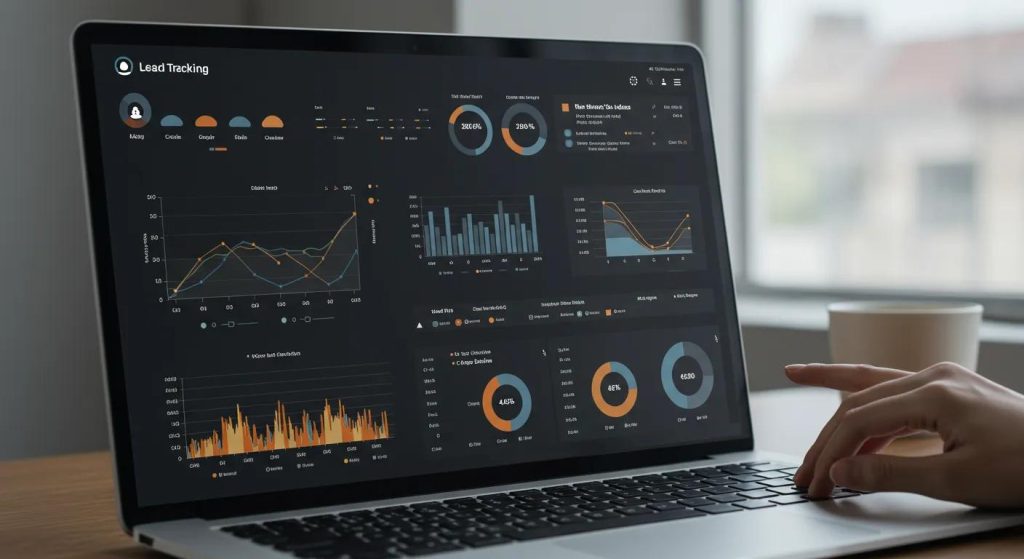Here are 5 meta titles based on the provided information:

Maximising ROI with Pay Per Lead in Australia: A Strategic Approach to Cost-Effective Lead Generation
Pay per lead in Australia is a performance-driven model that charges advertisers only for verified customer enquiries that meet predefined qualification criteria, making it a direct route to measurable ROI for businesses. This guide explains how Pay Per Lead (PPL) works in the Australian market, how qualified leads are defined and verified, and practical strategies to improve conversion and revenue from PPL campaigns. You’ll discover optimisation tactics — from landing page conversion and lead nurturing to CRM integration and value benchmarking — that make PPL a predictable, scalable channel. We also outline typical investment considerations to help you budget and forecast outcomes across industries. Where relevant, we’ll show you how Results Agency approaches transparent PPL models to support your confidence. By the end, you will have clear steps to maximise ROI from pay-per-lead services in Australia and know when to engage a specialist performance marketing partner.
What Is Pay Per Lead Marketing and How Does It Work in Australia?
Pay Per Lead marketing in Australia is a performance model where payment is triggered only when a delivered enquiry meets agreed qualification rules, and campaigns are optimised to generate those qualified outcomes. The mechanism typically follows a workflow of targeting, capture, qualification, verification, and delivery, which reduces wasted spend and aligns marketing investment with sales outcomes. Australian market factors — platform preferences, privacy regulations, and buyer intent patterns — shape targeting and the evidence required for verification. The next section unpacks what PPL practically means for businesses operating locally and how budget predictability, scalability, and risk reduction play out across sectors.
What Does Pay Per Lead Mean for Australian Businesses?
For Australian businesses, pay per lead means moving budget risk from unqualified clicks to measurable potential customers, improving cash efficiency and forecasting. This model is particularly useful for trades, B2B services, and high-value consumer verticals where lead quality matters more than traffic volume. Businesses gain predictable unit economics because each invoice corresponds to a verified enquiry, enabling clearer forecasts for pipeline and revenue. Understanding these operational benefits sets up the need to define qualification rigorously so advertisers pay for genuine opportunities rather than noise.
How Are Qualified Leads Defined in Pay Per Lead Campaigns?
Qualified leads in PPL campaigns are defined by measurable attributes such as demographic fit, stated intent, budget range, decision-maker contact, and completeness of contact information, and each attribute must be documented for verification. Typical qualification filters include location, industry type, purchase timeframe, and minimum spend thresholds; capture of these fields reduces ambiguity. Verification commonly requires call recordings, form timestamps, or CRM entries that match the predefined criteria. Clear definitions protect advertiser ROI and create a fair basis for invoicing and dispute resolution.
Why Is Pay Per Lead Considered a Performance-Based Marketing Model?
Pay Per Lead is performance-based because payment is contingent on a verifiable outcome rather than impressions or clicks, aligning agency and advertiser incentives around business results. The model reduces wasted ad spend and encourages optimisation toward quality signals that predict conversion, such as higher-intent keywords and tighter audience segments. Compared with CPM and CPC, PPL transfers more operational responsibility to the provider to qualify traffic, which benefits advertisers focused on pipeline growth. This alignment motivates continuous improvement across targeting, creative, and verification workflows.
How Can Australian Businesses Maximise ROI with Pay Per Lead Services?

Maximising ROI from pay-per-lead services requires coordinated optimisation across creative, capture, and post-lead workflows that increase conversion and revenue per lead. Key levers include landing page and form design, immediate follow-up and nurturing sequences, and tight CRM integration for routing and attribution. Using data to prioritise high-intent channels and iterating on qualification filters helps reduce invalid leads and improve close rates. The following list summarises tactical priorities to apply immediately.
- Optimise landing pages and forms to match intent and reduce friction with clear CTAs and sector-specific messaging.
- Implement immediate handoff and automated nurture sequences to boost contact-to-sale conversion within the crucial first 24 hours.
- Use A/B tests on messaging, offers, and form lengths to find the balance between lead volume and lead quality.
- Tag lead source data consistently and feed it into CRM for closed-loop attribution and ongoing optimisation.
These tactics work together to lift conversion and give clearer signals for scale decisions, and the next section details how CRM integration amplifies these effects.
| Optimisation Tactic | Mechanism | Expected Benefit |
|---|---|---|
| Landing page CRO | Aligns offer and intent, reduces form friction | Higher lead completion rate |
| Lead nurturing | Automated SMS/email sequences post-capture | Improved close rates and reduced CPL |
| CRM integration | Real-time routing and scoring | Faster follow-up and better attribution |
What Strategies Improve Conversion Rates in Pay-Per-Lead Campaigns?
Conversion rate improvements hinge on reducing friction and increasing relevance across the user journey from ad to form completion. Practical steps include shortening forms to essential fields, using progressive profiling for richer data later, and matching ad creative tightly to landing content to maintain intent alignment. Social proof, urgency messaging, and sector-specific trust cues increase perceived value and completion likelihood. Systematic A/B testing provides evidence on which changes move metrics, and those learnings should feed back into targeting and qualification rules.
How Does Lead Nurturing Enhance Pay Per Lead ROI?
Lead nurturing converts higher percentages of initial enquiries into paying customers by automating timely, personalised follow-up via email, SMS, and sales handover protocols. A three-step nurture—immediate acknowledgement, value-add follow-up, and sales outreach within 24–72 hours—can materially improve close rates and reduce effective CPL. Tracking touchpoints and outcomes allows attribution of revenue back to PPL spend, enabling smarter bid and channel decisions. Consistent nurturing also helps surface lead quality issues for iterative refinement of qualification filters.
How Can Integration with CRM Systems Boost Pay Per Lead Results?

CRM integration ensures leads are routed, scored, and reported in real time, shortening lead response times and improving sales outcomes through rapid follow-up. Technical checklist items include standardised lead fields, source tagging, endpoint validation, and automated routing rules to the right salesperson. With closed-loop reporting, marketers can attribute pipeline and revenue to specific campaigns and adjust spend toward higher-performing segments. Faster follow-up and better visibility directly increase contact-to-sale rates and sharpen ROI calculations.
What Are the Investment Factors for Pay Per Lead in Australia?
The investment for pay per lead in Australia varies by lead depth, industry competitiveness, verification effort, and exclusivity arrangements, making transparent benchmarking essential for forecasting. Investment drivers typically include a base rate for a validated contact, additional verification for stricter evidence, and considerations for exclusivity or priority delivery. You should model your PPL expectations against conversion rates to derive customer acquisition value and ROI. Below is a structured comparison of common lead types and their typical investment profiles to aid your budgeting.
Different lead types require different qualification effort and investment:
| Lead Type | Qualification Attribute |
|---|---|
| General enquiry | Basic contact + intent |
| Marketing qualified lead (MQL) | Interest + fit signals |
| Sales appointment | Confirmed decision-maker + time |
How Is Pay Per Lead Investment Calculated Based on Lead Qualification?
Investment calculation in PPL commonly follows a simple construct: a base rate for capture plus considerations for verification, exclusivity, and industry competitiveness. For example, a base validated enquiry may form the foundation, with added value for evidence-based verification and sole-delivery arrangements. You can discuss volume considerations or tiered investment tied to lead performance, and modelling should always convert PPL into expected revenue per lead to assess profitability. Transparent invoices that map investment to verification evidence maintain trust between provider and client.
What Is the Typical Investment Per Qualified Lead in Australia?
The typical investment per qualified lead in Australia depends on sector and intent; generally, higher-intent B2B leads represent a greater investment than broad consumer enquiries due to longer sales cycles and higher verification needs. You should treat published averages as directional and focus on conversion-to-sale metrics to judge value rather than raw PPL alone. Benchmarking against similar verticals and continuously measuring close rates will reveal the true acquisition value and inform sustainable PPL targets.
How Does Pay Per Lead Compare in Value to Other Lead Generation Models?
Pay Per Lead often reduces wasted spend compared with CPC and CPM because payment only occurs for validated outcomes, offering a value-driven investment, though the per-unit value can reflect the verification overhead. PPC provides control over traffic and immediate visibility but lacks guaranteed qualification, while CPL/CPA models vary by how conversion is defined. For businesses prioritising pipeline quality and predictable unit economics, PPL is recommended; for brand reach or early-funnel traffic, other models may be complementary.
- PPL: Lower risk, value-driven investment, better predictability.
- PPC: Initial investment, no qualification guarantee, flexible targeting.
- CPA/CPL: Variable alignment depending on conversion definition and tracking.
These comparisons help select the right mix based on goals and sales cycle characteristics.
Why Choose Results Agency for Pay Per Lead Services in Australia?
Results Agency is a boutique growth agency based in Sydney that provides pay-per-lead services with an emphasis on transparent verification, personalised account management, and performance-driven outcomes. As a certified Google Partner and Facebook Marketing Partner, Results Agency applies platform best practices and supported targeting features to improve lead relevance and campaign efficiency. Our PPL approach invoices only for qualified leads and includes clear evidence packages and a reporting cadence to maintain accountability. For advertisers seeking a results-focused partner that combines big-agency outcomes with boutique service, Results Agency positions itself as a practical option to consider.
How Does Results Agency Ensure Transparent and Verified Lead Quality?
Results Agency ensures verified lead quality through a documented verification checklist that maps required attributes—intent, contact completeness, budget indicators, and demographic fit—to specific evidence types such as form timestamps, call recordings, or CRM entries. Delivery reports accompany invoices with traceable data points and a regular reporting cadence so advertisers can audit leads. A defined dispute resolution process addresses mismatches quickly, and transparency in invoicing ensures clients pay only for leads that match the agreed criteria. This verification discipline protects advertiser ROI while enabling scalable campaign decisions.
What Commitment to Results Does Results Agency Offer for Pay Per Lead?
Results Agency is committed to invoicing only for qualified leads and providing clear reporting and evidence to substantiate each billed enquiry. While outcomes vary by vertical and offer, we emphasise a results-driven approach that ties performance to optimisation and reporting. Clients receive routine performance summaries and can request detailed lead documentation to validate charges. Our accountable billing and platform certifications support trust and operational clarity, ensuring you get the quality leads you expect.
How Does Being a Google and Facebook Partner Benefit Pay Per Lead Clients?
Partner status with Google and Facebook gives Results Agency access to advanced platform support, best-practice training, and sometimes early access to feature updates, which can translate into more effective targeting and campaign optimisation. Certified specialists apply platform-approved methods to bidding, audience creation, and measurement, improving the probability of finding high-intent prospects. This technical edge supports tighter targeting, improved conversion rates, and more reliable measurement for PPL campaigns, helping advertisers translate spend into a measurable pipeline.
What Are the Key Benefits of Pay Per Lead Marketing for Australian Businesses?
Pay Per Lead offers Australian businesses cost efficiency, higher lead quality, and measurable scalability by shifting payment from traffic to outcomes and enabling predictable budgeting tied to verified enquiries. The model reduces wasted ad spend by ensuring charges correspond to business-ready prospects, which improves return on ad spend when paired with strong sales processes. PPL also supports data-driven scaling because clear attribution allows marketers to reinvest in channels and offers that demonstrably produce revenue. The following list summarises the core advantages to evaluate against alternative approaches.
- Cost efficiency through pay-for-outcome billing that reduces wasted impressions and irrelevant clicks.
- Improved lead quality by enforcing qualification filters that surface decision-makers and purchase-ready prospects.
- Measurable scalability via closed-loop reporting that links leads to pipeline and revenue outcomes.
These benefits make PPL particularly attractive for businesses where predictability and pipeline quality outweigh raw traffic volume, and advertisers should test PPL alongside other channels to find the right long-term mix.
| Benefit Category | Metric | Typical Impact |
|---|---|---|
| Cost Efficiency | PPL reduction vs unqualified spend | Medium–High |
| Lead Quality | % of leads meeting qualification | High |
| Measurability | Closed-loop attribution availability | High |
How Does Pay Per Lead Deliver Cost Efficiency and Budget Control?
By invoicing only for verified leads, PPL turns variable marketing spend into predictable unit investments that can be modelled against conversion and revenue figures. Advertisers gain the ability to set caps, choose exclusivity levels, and discuss volume considerations to manage spend predictably. Clear reporting on verification evidence allows quick adjustments to qualification rules or channel spend when ROI drifts. This financial discipline enables smarter allocation of marketing budget toward profitable pipelines.
Why Is Pay Per Lead Effective for B2B Lead Generation in Australia?
PPL suits B2B because longer sales cycles and higher deal values reward investing in decision-maker contacts that are more likely to convert. Qualification filters ensure the right job titles, company sizes, and purchase intent are captured, and CRM integration plus nurture sequences close more of these higher-value leads. For B2B sellers, the value-driven PPL is often justified by the greater lifetime value and clearer sales outcomes tied to each qualified enquiry.
How Does Pay Per Lead Support Measurable Business Growth?
Pay Per Lead supports measurable growth by providing unit economics that tie acquisition directly to sales outcomes: leads → conversion rate → revenue per conversion → LTV. Tracking KPIs such as PPL, conversion rate, and customer acquisition value within closed-loop reporting enables incremental budget scaling of high-performing segments. When integrated with CRM data, PPL campaigns can be optimised to maximise pipeline velocity and predict revenue growth with greater confidence.
For advertisers ready to explore transparent, verified pay-per-lead services in Australia, Results Agency in Sydney offers a performance-led, partner-certified approach and can provide custom quotes or a consultation to map PPL to your revenue goals. Contact Results Agency to discuss qualification definitions, verification processes, and how a strategic PPL programme could fit your acquisition mix.




